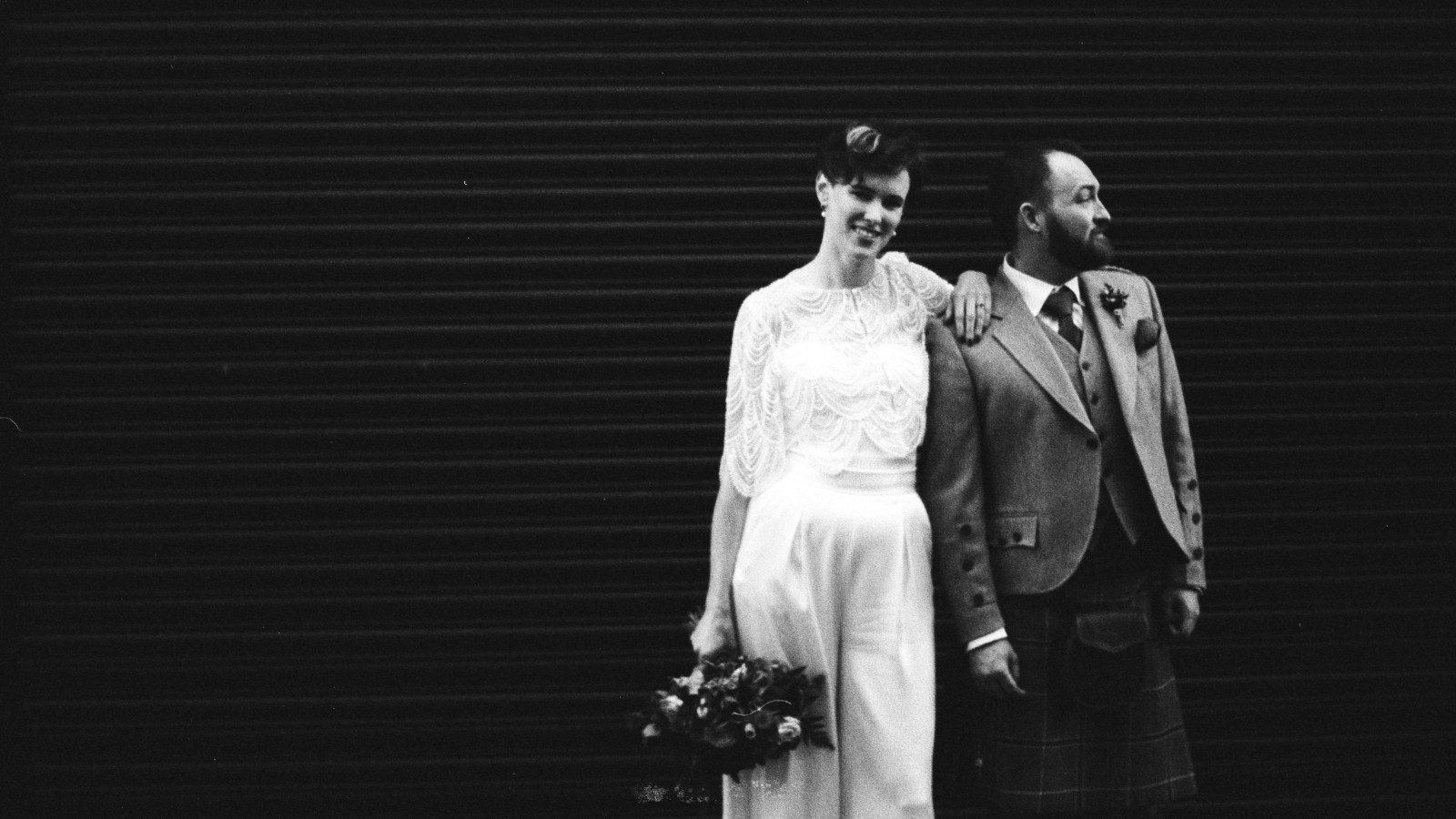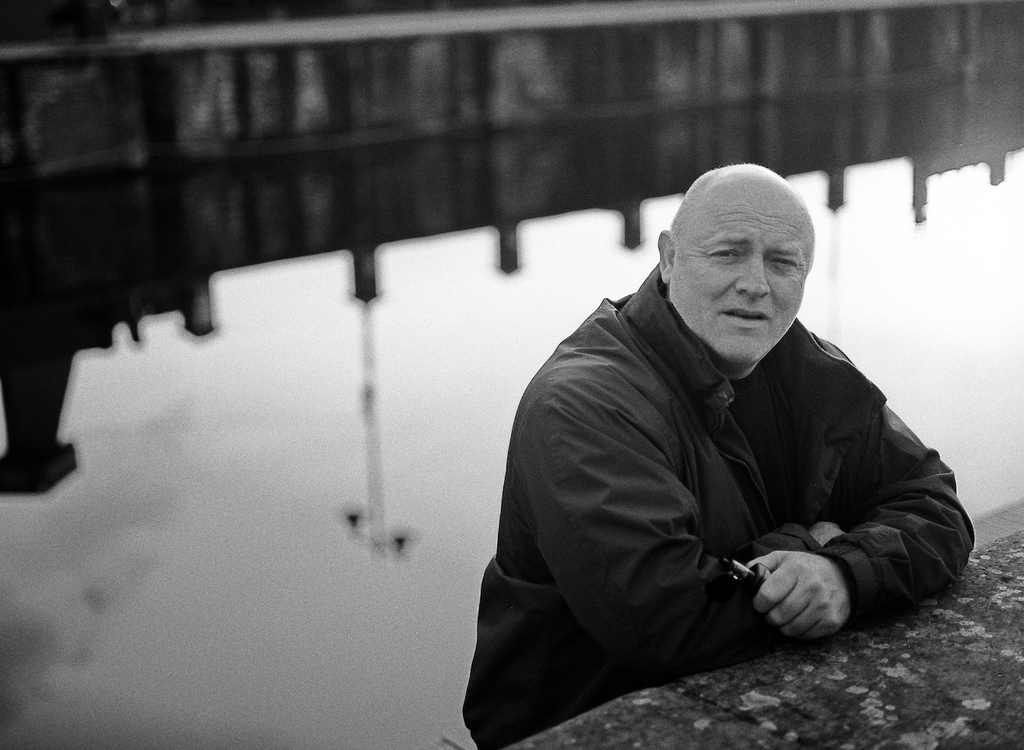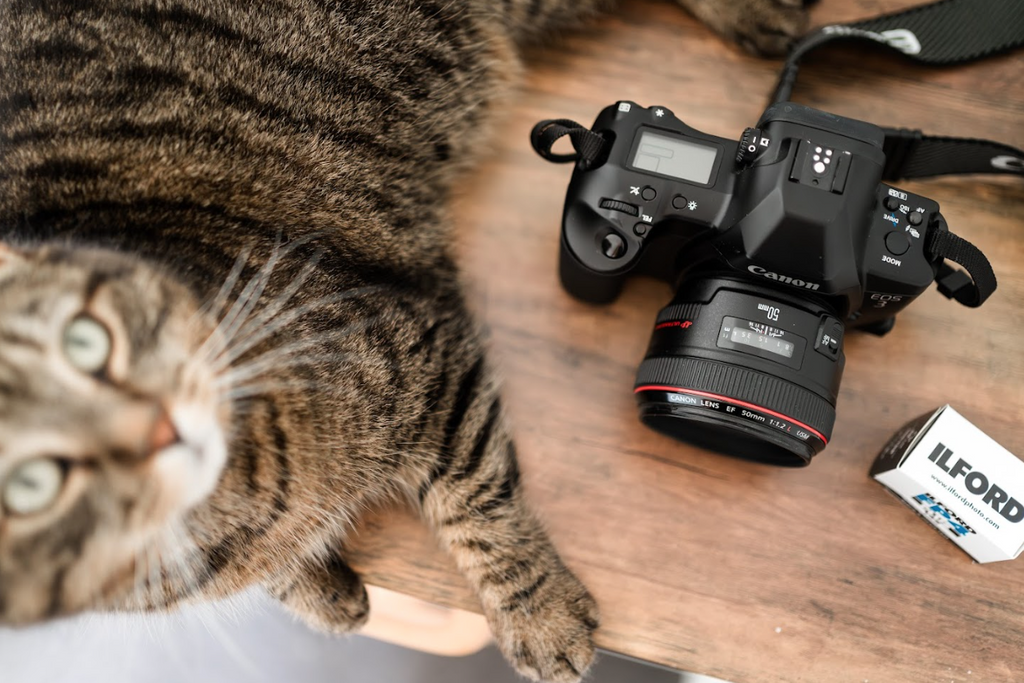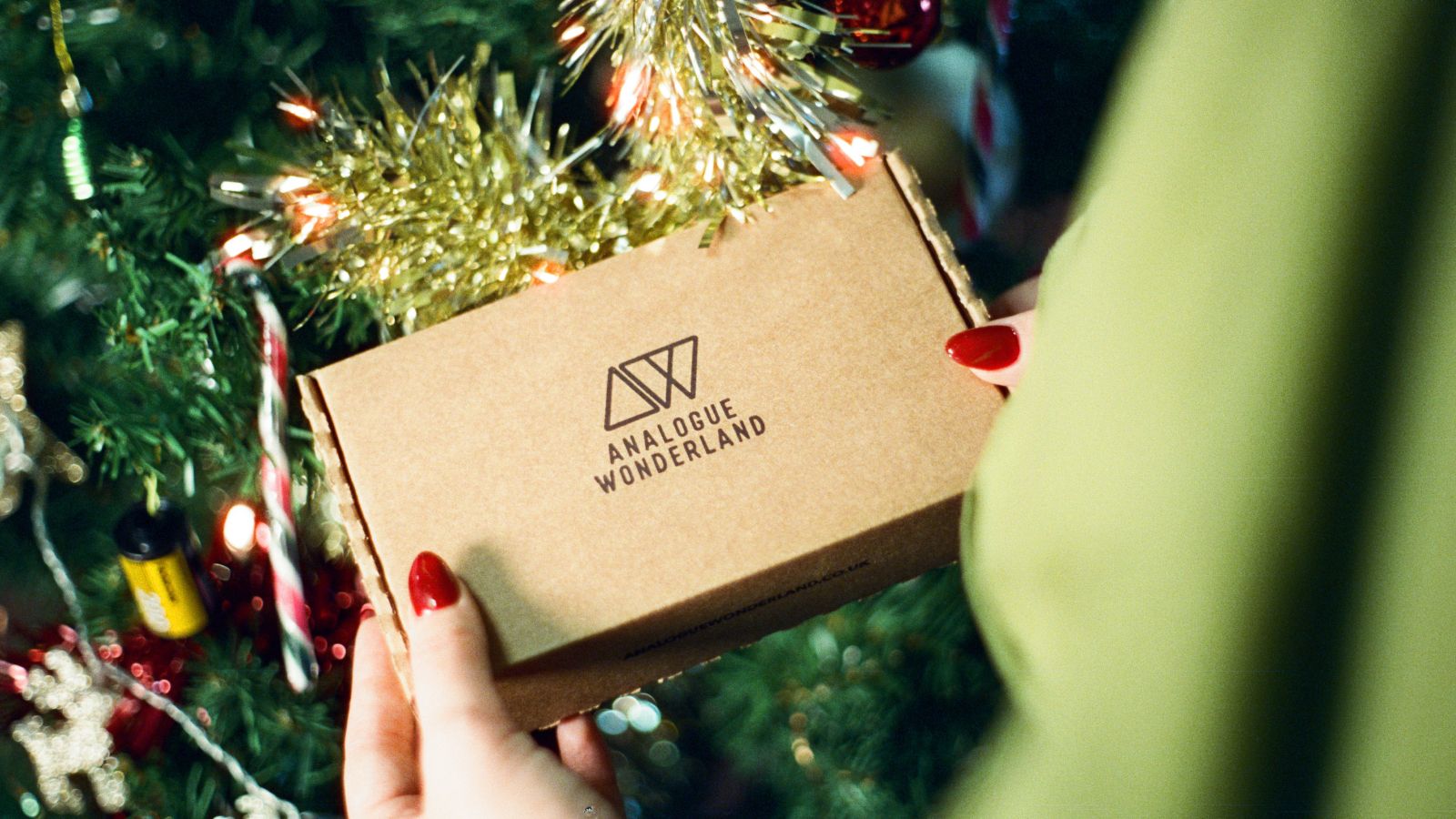Black Friday 2025 has landed at Analogue Wonderland, bringing some of our biggest film photography deals of the year - from discounted film and cameras to money-saving WonderLab processing offers, exclusive bundles, and festive specials available for a limited time only. Grab a great deal while stocks last!
Recent posts
Shop the article

Old-School Charm: Why Film Photography is Making a Comeback in Weddings
It was a Tuesday afternoon last year. I sat down at my desk and I opened our emails. There was a reply from a couple saying they had decided to book another wedding photographer because they offered 35mm film. I had two reactions; the first was shock and the second was annoyance. I mean, I love film photography.
If you know me, that would come as a surprise. I am the most impatient person you could ever meet. I hate queues, I hate middle lane hoggers and I hate surprises. But there’s something about film where all of the slowness becomes exciting.

I first ventured into film photography 12 years ago while I was in college. Back then it was considered “dead” and it seemed incredibly archaic that our college would even have a darkroom. Nevertheless, the darkroom is where I spent countless hours and my introverted nature loved the quietness and calm.
I carried on dabbling in film photography for a few years. As our career took off and we became successful wedding photographers (I work alongside my husband), film fell to the wayside like a discarded doll. I had seriously considered shooting 35mm film alongside digital at weddings. Me and Neil had some discussions about it. But being 19 and having only actually attended one wedding before (wow, the naivety of youth), I rightly decided that shooting weddings was already stressful enough as it was. That decision was made in 2012 and it’s now 2024.
Why is film resurging in the wedding industry now?
To understand the present, we first need to understand the past.
In 1990, the first commercially available digital camera emerged, although let’s be honest, it was a bit rubbish and you wouldn’t take it to a wedding with you. It was also stupidly expensive for the time. Despite its shortcomings, it hinted at greater things to come.
Fast forward to 1999, when Nikon introduced the D1. This marked the beginning of a new era in photography. It was considered the first “proper” digital camera. It still didn’t compare to film photography image quality but it showed that things were progressing fast.
By 2004, the landscape of photography underwent a huge shift. The Canon EOS 1D Mark II came out and the technology surpassed the once-dominant Kodachrome slide film. Digital photography had now arrived and was here to stay. Pair this with the first 2-megapixel camera phone coming out in 2005 and we have ourselves a bit of a digital revolution (there were phone cameras before then but they were a bit pants).

Lisa in action!
Let’s just stop there. Folks, we’re talking about 2004. Now for a lot of you, especially those who are 40 plus, you’ve seen the evolution of cameras so that isn’t a shock date. 2004 probably doesn’t really even seem that long ago?
However, in 2004 I was 10 years old. I remember using disposable cameras and taking them to chemists to get developed. Digital cameras also feel familiar too. I guess technology shifted so much during my youth, that it’s all become a bit of a blur. I had a foot in the analogue past and another foot in the digital now during my formative years.
I’m 30 years old now which makes me a millennial (please don’t roll your eyes). Wikipedia says this about millennials “As the first generation to grow up with the Internet, Millennials have also been described as the first global generation. The generation is generally marked by elevated usage of and familiarity with the Internet, mobile devices, and social media. The term "digital natives", which is now also applied to successive generations, was originally coined to describe this generation”.
What that means in English is I was born into a household that didn’t have a computer. We simply didn’t need one or could have afforded one easily. By the time I was in my teens though, if I couldn’t get on MSN or MySpace after school I would’ve had a full-blown meltdown.
For me, digital is exciting. It’s new, it’s evolving. And let’s be honest, it’s opened doors for many of us. I wouldn’t maybe be a wedding photographer without the internet. It just wouldn’t have been as accessible or possible. I grew up with technology evolving and each time something new came out, something else got left behind. On paper, I shouldn’t really like film photography but we can’t help what we like.
I know what you’re thinking; ‘what has this got to do with film photography?’ Well, the average age of our couples has always been around 25-35 years old. When I started, they were older than me. Then they gradually shifted to being around the same age. Now, I’m noticing that occasionally they’re a shade younger. This means our couples are moving into ‘Generation Z’. They’re the first generation to have grown up totally with the internet and mobile phones. They’re used to media being instant and disposable. They're indigenously digital.
This means to them film photography is novel, unknown, organic, and exciting. It gives them second-hand nostalgic vibes and first-hand imperfections you can’t replicate with digital (even with filters). It is the complete opposite of what they’re used to and that’s what they like about it. There’s a novelty in antiquity perhaps?

I came to this realisation when I put a poll up on our Instagram stories. I asked our audience if they knew what 35mm film photography was and a staggering 82% said ‘NO’. I later asked if they thought 35mm film photography was cool and 88% of the same audience said ‘YES’.
It’s easy to think film photography is making a resurgence simply because it’s “cool” or trendy. It is cool but this has always been the case, it’s trendy too, and nobody can deny it. Another professional shooter Sarah Emma Smith talks about her experiences here: Digital for Delivery; Film for Fun.
So there’s something more going on here. Each time we roll in and celebrate a new year, the further we move away from the cultural familiarity of film and the more novel it becomes. And we're not the only folks to notice, eh Pentax?
Introducing film photography to weddings
Casting our minds back to that email we received last year, I knew we needed to introduce film photography to our offering, regardless of the reasoning. I’m a firm believer that if one person says something out loud, a hundred more people are thinking the same thing.
I’ve been a wedding photographer for over 10 years and knew I was ready for a new challenge. As previously mentioned, I’ve always wanted to offer film photography, and the fact this is now viable is super exciting.
There were a few things I needed to pin down before taking my first roll of film to a wedding. Those things were:
- Camera
- Lens choices
- Film Lab (I knew I didn’t want to develop my own film because I didn’t have the space or time)
Let’s delve into testing. At first, I knew I wanted to offer medium format. That was just a given. Medium format looks totally different from 35mm in many circumstances, it has another layer of quality and nostalgia we both recognised and wanted.
We looked into medium-format film cameras and were quickly disappointed by their technical shortcomings. It appeared that the fastest shutter speed we could get was 1/500th. As Sony photographers, we’re used to 1/8000th mechanically and 1/32000th on the electronic shutter. Weddings occur in the summer, we like wide apertures, shutter speed is a huge deal for us.

The gorgeousness of a 120 film camera is real
We managed to bag ourselves a Mamiya 645s which had a shutter speed that reached up to 1/1000th. It came with an 85mm f/2.8 lens. Perfect. We also got ourselves a polarising filter as we wanted to make the best use of the f/2.8 dreamy goodness.
I then conducted an incredibly straightforward (and arguably dull) test shoot using my husband as a subject (no offence, Neil). We headed off to our local town with 6 rolls of film. We kept the conditions the same; I just wanted to compare the film without being distracted by composition or lighting differences. The 6 rolls of film I tested were:
- Ilford FP4 +
- Ilford HP5 +
- CineStill BwXX
- CineStill 50D
- Kodak Portra 160
- Kodak Ektar
If you’re excited to see the outcome, I’m going to disappoint you early and let you know we had a faulty camera. I shipped off my rolls of film to Analogue Wonderland and was disappointed to see the fault so obvious!
Out of the six rolls, one unravelled in the post, four came back blank and two came back successful with exposures. I loaded the film the same every time so I knew it wasn't a user error. I’m also super pleased with myself that I picked a reputable and well-reviewed film lab as I could rule the lab out of being a possible issue, too.
Here is one of the successful frames for our test shoot shot on Cinestill BwXX:

I now had the option to get the camera serviced/repaired and go down a potential rabbit hole. However, upon using the Mamiya we both realised we also hated manual focusing.
In different circumstances, that would be fine. However, for weddings, I just knew it wouldn’t be viable. I have pretty good eyesight and it was just almost impossible to see when I’d hit sharpness. Hats off to those wedding photographers who used to take medium format with them to every wedding!
We started our research process again and whilst getting a medium format camera with autofocusing was possible, it wasn’t financially viable. So we opened our eyes to consider all film cameras.
The answer had been lying under our noses. A few years ago Neil bought me a Canon EOS 3 film camera as a birthday present. I’d shot with it plenty of times so I knew it was in full working order.

Cat not included in the starter kit
The Canon EOS 3 produced from 1998 to 2007, has quick autofocusing and can take EF Canon lenses. We bought a 50mm f/1.2 L lens and I was pretty much good to go.
Given how good the camera’s focus system is and the fact it’s got a modern AF lens attached, I was worried it would look too ‘perfect’ and too much like digital. This helped inform my film choice and I opted for Ilford FP4 +. The black and white I thought would help the images look super nostalgic along with the grain.
Shooting film for the first time at a wedding
Armed with a roll of film and our Canon EOS 3, we set off to one of our first weddings of the year in London. We just knew the vibe would be perfect to test out this new medium.
We went with some pretty clear ideas of what we would or wouldn’t do. We knew we wanted to centre our film use around couple portraits (with the occasional exception depending on inspiration). This way we could take our time and take each frame with intent.
Since there are two of us we’d have one mirrorless modern camera at work whilst our new analogue experiment was underway… safety first on a live wedding!


Experimenting with film
Once we got some shots in the bag, I decided to do some experimenting. The Canon EOS 3 has a really nifty double exposure setting. I’m a big believer in sharing the things that didn’t work, as well as the things that did.
Here’s my first live attempt at a double exposure:

The first frame was of the couple and the second frame was of the bouquet. This didn’t work because I put my camera in evaluative metering instead of spot metering to give myself a fighting chance on the day. This meant on my first exposure of the couple, the frame was too underexposed meaning the flowers then didn’t show up against them (check out our guide to the Exposure Triangle to understand why this is an issue!)
Here’s another example of my metering mode causing me issues:

The bride in the mirror is overexposed because I should have exposed for the highlights. Again, this is something spot metering would have fixed. I’ll just adjust ready for next time and I’m excited to have another go at double exposures again.
Later on in the evening, I realised I had a few frames left. By this point, the venue was pretty dark and I was working with a film speed of 125. I had a go at some two-second exposures whilst everyone was dancing and I think these were pretty successful for capturing the atmosphere of the party.


Offering film photography for weddings - My conclusion
If you’re on the fence about whether to offer film photography for weddings, hopefully, this has persuaded you one way or the other. As someone who was initially anxious to shoot film at weddings, I can reassure you that it isn’t as scary as it seems. It was a tad tricky juggling different cameras but I feel this is something I’ll get used to. The excitement of getting the scans back was 100% worth it.

Most important in many respects is the reaction from our couple. We’d asked if it was ok to experiment on their day and reassured them that they’d still have all the coverage through digital that they’d expect, so it was a ‘no risk’ setting. They were really pleased, saying “We can’t stop looking at them”. Subsequent reactions from our Instagram followers have also been really positive.
We’ve now added a collection that includes film photography. We chose to add it as an extra clients pay for simply because of the costs associated. We also thought it was a great way to measure people’s enthusiasm levels around it. It won’t be for everyone but for those who are interested, it's as exciting for them as it is for us! We’re looking forward to seeing what this year brings for our film photography journey.
Have you ever shot a wedding on film - either professionally or as an excited guest?
Written by:
Lisa Plumb from Lisa & Neil Wedding Photography
Ready to dive in?
Keep Reading
View all
Christmas 2025: Shipping & Opening Hours
Christmas 2025 is fast approaching! To make sure your analogue goodies arrive in time, take note of our last shipping dates, plus opening and operating hours over the festive season. We've got everything you need to gift the magic of film photography this Christmas!

Film Photography Christmas Gift Guide 2025: Analogue Wonderland
Capture the magic of Christmas with film - no filters needed. Our 2025 Film Photography Christmas Gift Guide 2025 is packed with thoughtful presents for every type of shooter, from curious beginners to seasoned photographers. Discover film stocks, cameras, and creative accessories that will make this festive season truly memorable.
Subscribe to our newsletter 💌
Sign up for our newsletter to stay up to date on film photography news, sales and events:
Free Tracked Shipping
On all UK orders over £50
Passion For Film
An unbeatable range and an on-site lab
Our Customers Trust Us
Thousands of independent 5* reviews
All Deliveries are Carbon Neutral
Independently audited and verified by Planet
- Opens in a new window.








4 Comments -
Tim Payne • -
Adrian Sie • -
Adrian Sie • -
Lawrence Huber •
Hi, this is really interesting and helpful so a huge thank you for writing it. For me it’s perfect timing as it’s something I’m looking at introducing into my business – I’m at the start of it all so this has blog has been super helpful. Thanks and good luck!
Thanks for sharing – hadn’t thought about it yet seems so obvious! Good luck
Thanks for sharing – hadn’t thought about it yet seems so obvious! Good luck
Before you were born, in the middle 70’s, I shot a couple of weddings with film for family and friends as a wedding gift. I was not a paid pro but was very proficient with photography. It was immensely enjoyable. I still take my Canon F-1 out and run film through it.
You have a nice story.